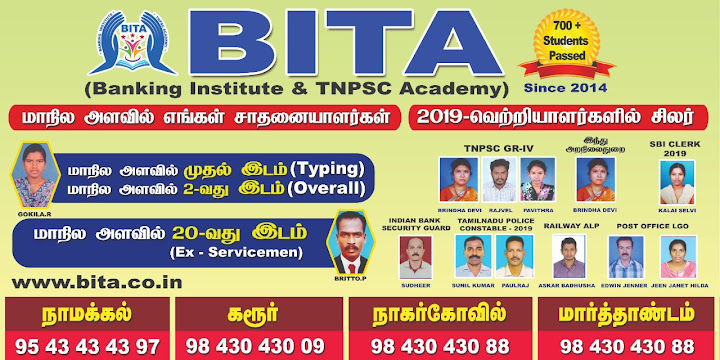Directions
(1-5): Study the information and answer the given questions:
Eight persons J, K,
L, M, N, O, P and Q will have to attend the seminar in the March and
April month. In each month, they will attend the seminar on dates
3rd, 7th, 9th and 11th of the given month. Not more than four persons
will attend the seminar in same month.
J will attend the
seminar on 7th of any of the given month. Three persons will attend
the seminar between J and P. More than two persons will attend the
seminar between P and M. Two persons will attend the seminar between
M and Q. Three persons will attend the seminar between Q and L. K
will not attend the seminar immediately before or immediately after
the dates on which Q attend the seminar. K will not attend the
seminar on 11th April. Two persons will attend the seminar between N
and O. N will attend the seminar in March month.
Q1. Who among
following will attend the seminar on 11th April?
(a) L
(b) P
(c) O
(d) J
(e) M
Q2. How many persons
will attend the seminar between P and Q?
(a) One
(b) three
(c) five
(d) two
(e) four
Q3. L will attend
the seminar on which of the following day?
(a) 7th March
(b) 3rd March
(c) 11th March
(d) 11th April
(e) None of these
Q4. If L is related
to K and Q is related to O then in the same way N is related to?
(a) L
(b) P
(c) O
(d) J
(e) M
Q5. Who among
following will attend the seminar on 3rd April?
(a) Q
(b) P
(c) O
(d) J
(e) M
Solutions
(1-5):
S1. Ans.(e)
Sol.
S2. Ans.(d)
Sol.
S3. Ans.(b)
Sol.
S4. Ans.(d)
Sol.
S5. Ans.(a)
Sol.
Directions (6-9): In
each of the questions below is given two statements followed by two
conclusions numbered I and II. You have to take the given statements
to be true even if they seem to be at variance with commonly known
facts. Read all the conclusions and then decide which of the given
conclusions logically follows from the given statements disregarding
commonly known facts.
Q6. Statements:
All dress is chair.
Some dress is table.
Conclusions:
I. Some table
is chair.
II. All dress
being chair is a possibility.
(a) None follows
(b) Only I follows
(c) Only II follows
(d) Either I or II
follow
(e) Both I and II
follow
Q7. Statements:
All teacher is
student.
No student is class.
Conclusions:
I. Some class
is not student.
II. No teacher
is class.
(a) None follows
(b) Only I follows
(c) Only II follows
(d) Either I or II
follow
(e) Both I and II
follow
Q8. Statements:
No rough is fair.
All line is fair.
Conclusions:
I. No line is
rough.
II. Some rough
is fair.
(a) None follows
(b) Only I follows
(c) Only II follows
(d) Either I or II
follow
(e) Both I and II
follow
Directions (9-11):
In these questions, relationship between different elements is shown
in the statements. These statements are followed by two conclusions:
(a) If only
conclusion I follows.
(b) If only
conclusion II follows.
(c) If either
conclusion I or II follows.
(d) If neither
conclusion I nor II follows.
(e) If both
conclusion I and II follow.
Q9. Statements: T
≥ U > V = W ≥ X > Y
Conclusion:
I. T ≥ Y
II. Y < T
Q10. Statements: S
>T = U < V ≤ W < X
Conclusion:
I. U > X
II. X ≤ U
Q11. Statements: M
< N = O ≤ P ≤ Q = R
Conclusion:
I. R > N
II. N ≤ R
Solutions
(9-11):
S9. Ans.(b)
Sol. Conclusion:
I. T
≥ Y (Not True)
II. Y < T (True)
S10.
Ans.(d)
Sol. Conclusion:
I. U > X (Not
True)
II. X ≤ U (Not True)
S11.
Ans.(b)
Sol. Conclusion:
I. R > N (Not
True)
II. N ≤ R (True)
Directions (12-13):
Read the following information carefully to answer the questions that
follow:
A family consists of
eight members A, B, C, D, E, F, G and H. B is the mother of A who is
the only brother of E. H is father in law of B. C is father of E. H
has only one daughter. G is the son of F who is son in law of H. C is
brother of D.
Q12. How is E
related to C?
(a) father
(b) father in law
(c) Son
(d) Cannot
determined
(e) daughter
Q13. How is G
related to C?
(a) Son
(b) Uncle
(c) Daughter
(d) Niece
(e)
Nephew
Solutions (12-13):
S12. Ans.(d)
Sol.
S13. Ans.(e)
Sol.
Q14. If ‘A $ B’
means ‘A is father of B’, ‘A # B’ means ‘A is daughter of
B’, ‘A @ B’ means ‘A is sister of B’, then how is K related
to M in H @ K $ L # M?
(a) Husband
(b) Uncle
(c) Father
(d) Cannot be
determined
(e) None of these
Q15. If ‘P $ Q’,
means ‘P is father of Q’; ‘P # Q’ means ‘P is mother of Q’;
‘P * Q’ means ‘P is sister of Q’, then how is D related to N
in N # A $ B * D?
(a) Nephew
(b) Grandson
(c) Granddaughter
(d) Cannot be
determined
(e) None of these


No comments:
Post a Comment